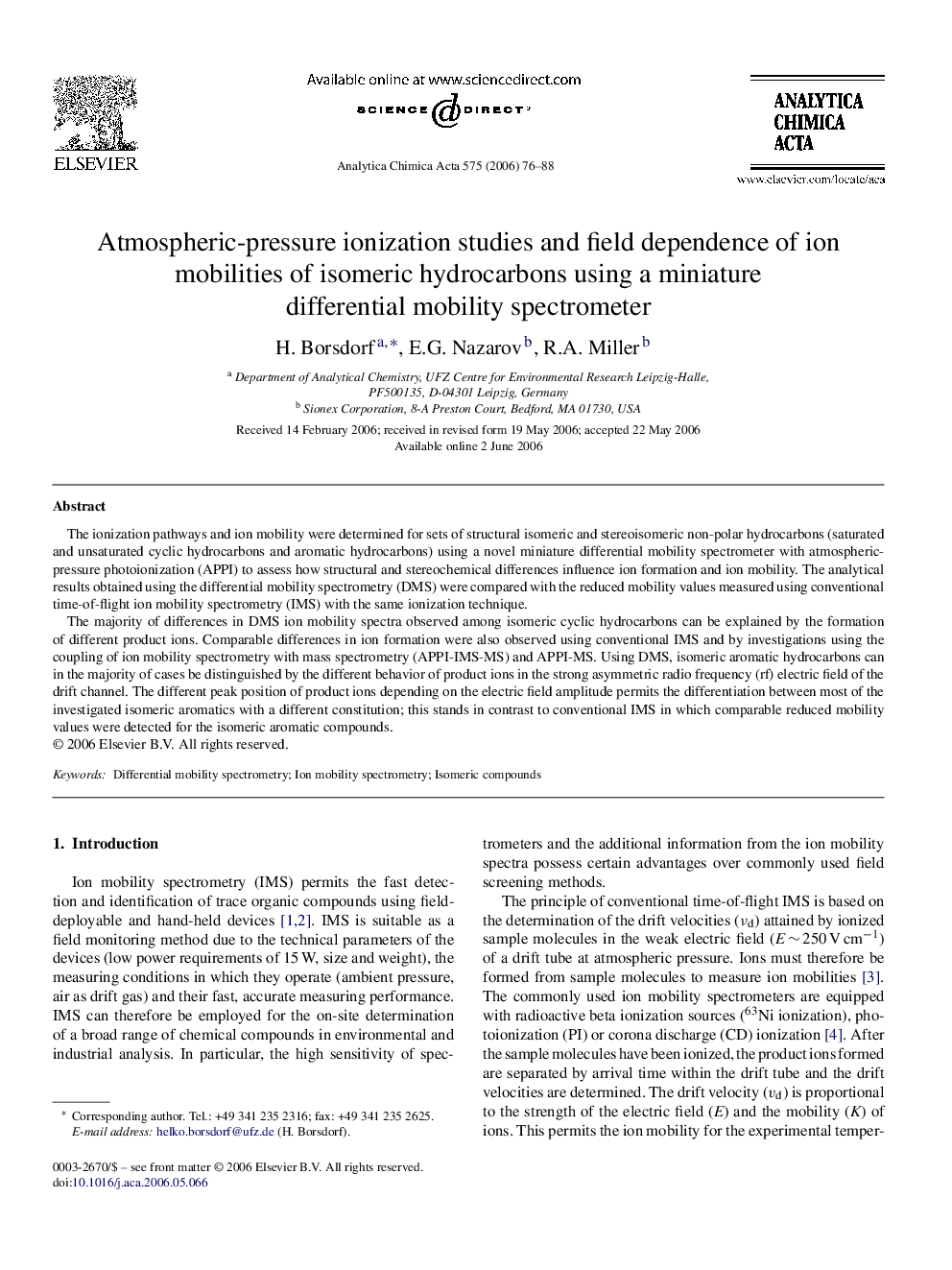| Article ID | Journal | Published Year | Pages | File Type |
|---|---|---|---|---|
| 1170507 | Analytica Chimica Acta | 2006 | 13 Pages |
The ionization pathways and ion mobility were determined for sets of structural isomeric and stereoisomeric non-polar hydrocarbons (saturated and unsaturated cyclic hydrocarbons and aromatic hydrocarbons) using a novel miniature differential mobility spectrometer with atmospheric-pressure photoionization (APPI) to assess how structural and stereochemical differences influence ion formation and ion mobility. The analytical results obtained using the differential mobility spectrometry (DMS) were compared with the reduced mobility values measured using conventional time-of-flight ion mobility spectrometry (IMS) with the same ionization technique.The majority of differences in DMS ion mobility spectra observed among isomeric cyclic hydrocarbons can be explained by the formation of different product ions. Comparable differences in ion formation were also observed using conventional IMS and by investigations using the coupling of ion mobility spectrometry with mass spectrometry (APPI-IMS-MS) and APPI-MS. Using DMS, isomeric aromatic hydrocarbons can in the majority of cases be distinguished by the different behavior of product ions in the strong asymmetric radio frequency (rf) electric field of the drift channel. The different peak position of product ions depending on the electric field amplitude permits the differentiation between most of the investigated isomeric aromatics with a different constitution; this stands in contrast to conventional IMS in which comparable reduced mobility values were detected for the isomeric aromatic compounds.
